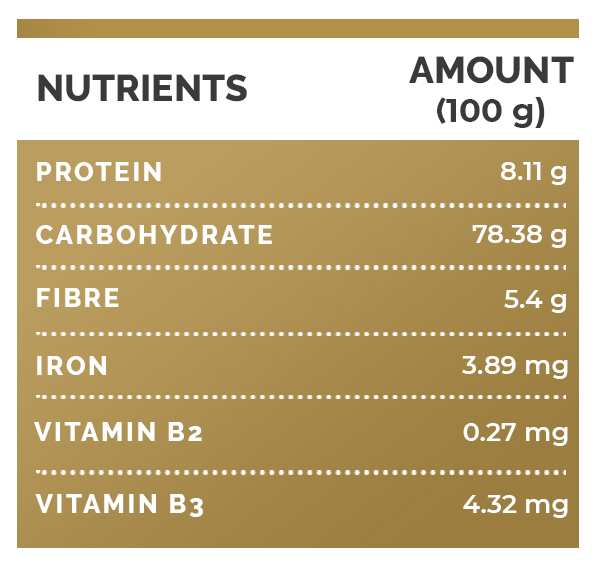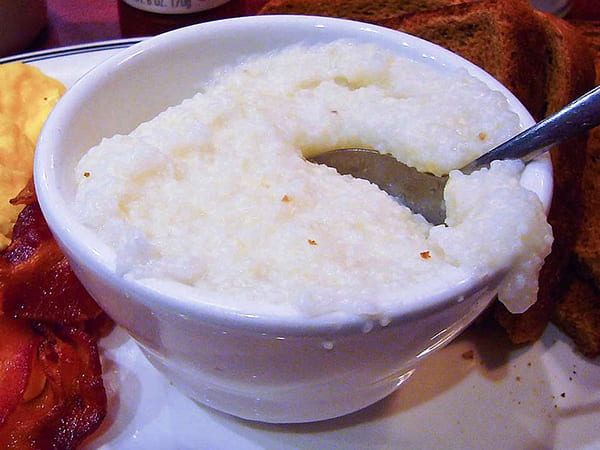Just In
- 8 min ago

- 3 hrs ago

- 10 hrs ago

- 11 hrs ago

Don't Miss
- Sports
 IPL 2024: LSG vs CSK Award Winners, Man of The Match, Post-Match Presentation, Scorecard & Records
IPL 2024: LSG vs CSK Award Winners, Man of The Match, Post-Match Presentation, Scorecard & Records - News
 Chinese President Xi Jinping Orders Biggest Military Reorganisation Since 2015
Chinese President Xi Jinping Orders Biggest Military Reorganisation Since 2015 - Education
 Exam Pressure Does Not Exist; Studying Punctually is Crucial; Says Aditi, the PSEB 2024 Topper
Exam Pressure Does Not Exist; Studying Punctually is Crucial; Says Aditi, the PSEB 2024 Topper - Movies
 When Karan Johar Revealed Sara Ali Khan And Janhvi Kapoor Once Dated Siblings On KWK 7, Guess Who?
When Karan Johar Revealed Sara Ali Khan And Janhvi Kapoor Once Dated Siblings On KWK 7, Guess Who? - Finance
 Reliance, ONGC, Tata, Adanis: Energy Stocks Didn't Get The Memo Of Bears, Up 12% In 30-Days; 10 Stocks To BUY
Reliance, ONGC, Tata, Adanis: Energy Stocks Didn't Get The Memo Of Bears, Up 12% In 30-Days; 10 Stocks To BUY - Automobiles
 Suzuki Swift Hatchback Scores 4 Star Safety Rating At JNCAP – ADAS, New Engine & More
Suzuki Swift Hatchback Scores 4 Star Safety Rating At JNCAP – ADAS, New Engine & More - Technology
 Dell Introduces AI-Powered Laptops and Mobile Workstations for Enterprises in India
Dell Introduces AI-Powered Laptops and Mobile Workstations for Enterprises in India - Travel
 Journey From Delhi To Ooty: Top Transport Options And Attractions
Journey From Delhi To Ooty: Top Transport Options And Attractions
Grits: Benefits, Side Effects And Recipe
Morning breakfast is the most important part of the day. The saying "When the stomach is full, it makes no difference whether you are rich or poor" suits well here. Several high fibre foods help people feel satiated all day long and one among them are grits which are sure to fill your belly giving you a nutritious advantage as well.
So, what are grits? Ever heard of the term before?

Grits (maize) are the fine edible form of ground white corns which are prepared after drying the corns, soaking and cooking them in alkaline solution (mainly limewater), and later removing their pericarp (outer cover) to get a finer texture out of them. The process of soaking and cooking the grits is called nixtamalization while the end product is called hominy.
However, many people tend to mistake grits with polenta. Though both are the two sides of the same coin they differ in certain aspects. While grits are made of ground white corns, polenta is made from ground yellow corns and the notable difference between the two forms of corns lies in their texture.

As grits are treated with an alkaline solution, they are finer and forms a homogeneous porridge when cooked while polenta is much coarser and forms a porridge which is rough and uneven. But don't underestimate their nutritional benefits as they both are substitutes for each other.
Coming back to grits, they make for a good breakfast option and are loaded with numerous health benefits which help in treating conditions like diabetes, celiac disease, anaemia, etc.
Nutritional Value Of Grits
100 g of grits contain 351 kcal, much more than polenta and oatmeal. They also contain the following nutrients:
- 8.11 g protein
- 78.38 carbohydrate
- 5.4 g fibre
- 3.89 mg iron
- 0.27 mg vitamin B2
- 4.32 mg vitamin B3

Health Benefits Of Grits
1.
Keep
weight
under
control
The
fibre
content
of
grits
is
5.4
g
which
is
higher
in
comparison
to
oatmeal
and
other
high-fibre
foods.
They
help
promote
weight
loss,
constipation,
and
other
digestive
disorders
[5]
.
2.
Protect
against
degenerative
eye
disorders
Grits
contain
two
important
antioxidants
called
lutein
and
zeaxanthin
[1]
which
reduce
the
risk
of
degenerative
eye
disorders
like
cataract
and
age-related
macular
degeneration.
3.
Help
combat
anaemia
Grits
make
up
for
a
huge
amount
of
iron
[2]
in
the
body
that
helps
combat
anaemia
and
other
illnesses
caused
due
to
blood
deficiency.
They
helps
the
body
to
prepare
new
blood
cells.
4.
Good
for
people
with
celiac
disease
Celiac
disease
is
marked
by
an
immune
reaction
to
eating
gluten
which
causes
damage
to
the
small
intestine.
As
grits
are
naturally
gluten-free,
people
with
celiac
disease
can
consume
it
[3]
.
Note: Check for the gluten proportion on grits packets available in the market.
5.
Reduce
oxidative
stress
Free
radicals
in
the
body
can
harm
the
cells
and
cause
several
chronic
diseases.
Grits
contain
antioxidants
like
zeaxanthin,
caffeic
acid,
syringic
acid,
and
4-OH
benzoic
acid
that
help
prevent
diseases
caused
due
to
free
radicals
[4]
.
6.
Manage
diabetes
Grits
have
a
glycemic
index
(GI)
of
40
that
makes
it
a
diabetes-friendlyfood
[5]
.
They
keep
the
blood
sugar
level
in
the
body
under
control
and
manages
diabetes.
7.
Prevent
cancer
Grits
contain
vitamin
B
that
helps
the
body
produce
DNA,
repairs
old
tissues
and
keeps
new
cells
healthy.
This
helps
in
preventing
cancer.
The
amount
of
vitamin
B
in
grits
is
much
higher
than
oatmeal
[4]
.
8.
Promote
muscle
health
Grits
contain
leucine
(one
of
nine
important
amino
acids)
that
helps
in
the
growth
of
bone
tissues
and
repair
muscles
in
our
body
[6]
.
They
help
our
body
store
glycogen
to
give
muscular
energy.
How Much Grits To Consume
For women, the recommended daily intake is 25 g while in men it is 38 g [6] .
Side Effects Of Grits
Though grits are good for our body, they have some side effects that need to be noted. As discussed, grits are good for people with celiac disease but in some cases, they may develop bloating, constipation, diarrhoea, and fatigue [7] .
Grits With Honey And Berries Recipe
Servings: 2

Ingredients:
- 120 g of grits
- 230-250 ml milk (1 cup)
- 120-150 ml of water
- Salt per taste
- 7 g of unsalted butter
- 20 ml of honey
- 30 g of fresh berries
- Half tablespoon pumpkin seeds
Method:
- Take a pot and add milk, water, grits, salt and start boiling the mixture.
- Pour honey and butter.
- Reduce the flame to medium and cook for 20-30 minutes until the mixture becomes thick.
- When cooked, serve in a bowl topped with berries and pumpkin seeds for added flavours.
- [1] De Oliveira, G. P., & Rodriguez‐Amaya, D. B. (2007). Processed and prepared corn products as sources of lutein and zeaxanthin: Compositional variation in the food chain. Journal of Food Science, 72(1), S079-S085.
- [2] KINNEY, T. D., HEGSTED, D. M., & FINCH, C. A. (1949). The influence of diet on iron absorption; the pathology of iron excess. The Journal of experimental medicine, 90(2), 137–146. doi:10.1084/jem.90.2.137
- [3] Saturni, L., Ferretti, G., & Bacchetti, T. (2010). The gluten-free diet: safety and nutritional quality. Nutrients, 2(1), 16–34. doi:10.3390/nu20100016
- [4] Prasanthi, P. S., Naveena, N., Vishnuvardhana Rao, M., & Bhaskarachary, K. (2017). Compositional variability of nutrients and phytochemicals in corn after processing. Journal of food science and technology, 54(5), 1080–1090. doi:10.1007/s13197-017-2547-2
- [5] Panlasigui, L. N., Bayaga, C. L., Barrios, E. B., & Cochon, K. L. (2010). Glycaemic response to quality protein maize grits. Journal of nutrition and metabolism, 2010, 697842. doi:10.1155/2010/697842
- [6] Sarkisova, N. E., & Kirilenko, S. K. (1976). Amino acid composition and biologic value of the proteins of several sorts of buckwheat. Voprosy pitaniia, (1), 54-56.
- [7] Saturni, L., Ferretti, G., & Bacchetti, T. (2010). The gluten-free diet: safety and nutritional quality. Nutrients, 2(1), 16–34. doi:10.3390/nu20100016
-
 healthWhat Does Red Eye Mean In Photos? Do You Know It Can Save Your Life?
healthWhat Does Red Eye Mean In Photos? Do You Know It Can Save Your Life? -
 healthWorld Sight Day: Tips To Safeguard Your Eyes At Work
healthWorld Sight Day: Tips To Safeguard Your Eyes At Work -
 healthUV Rays: Are They A Hidden Threat to Your Eyes?
healthUV Rays: Are They A Hidden Threat to Your Eyes? -
 health10 Superfoods to Boost Eye Health During Monsoons
health10 Superfoods to Boost Eye Health During Monsoons -
 wellnessEye Twitching Or Eye Blinking: Causes And Quick Remedies
wellnessEye Twitching Or Eye Blinking: Causes And Quick Remedies -
 newsAll India Ophthalmological Society Postpones Routine Consultations & Elective Surgeries
newsAll India Ophthalmological Society Postpones Routine Consultations & Elective Surgeries -
 wellnessWorld Sight Day 2019: Science-backed Tips To Protect Your Vision And Prevent Blindness
wellnessWorld Sight Day 2019: Science-backed Tips To Protect Your Vision And Prevent Blindness -
 wellnessWorld Sight Day 2019: Devices To Help The Vision Impaired
wellnessWorld Sight Day 2019: Devices To Help The Vision Impaired -
 disorders cureFarsightedness (Hyperopia): Causes, Symptoms, Diagnosis And Treatment
disorders cureFarsightedness (Hyperopia): Causes, Symptoms, Diagnosis And Treatment -
 wellness10 Best Exercises For Tired Eyes
wellness10 Best Exercises For Tired Eyes -
 healthNational Eye Donation Fortnight 2019: Myths And Facts About Eye Donation
healthNational Eye Donation Fortnight 2019: Myths And Facts About Eye Donation -
 wellnessNational Eye Donation Fortnight 2019: Current Scenario Of Eye Donation In India
wellnessNational Eye Donation Fortnight 2019: Current Scenario Of Eye Donation In India


 Click it and Unblock the Notifications
Click it and Unblock the Notifications



